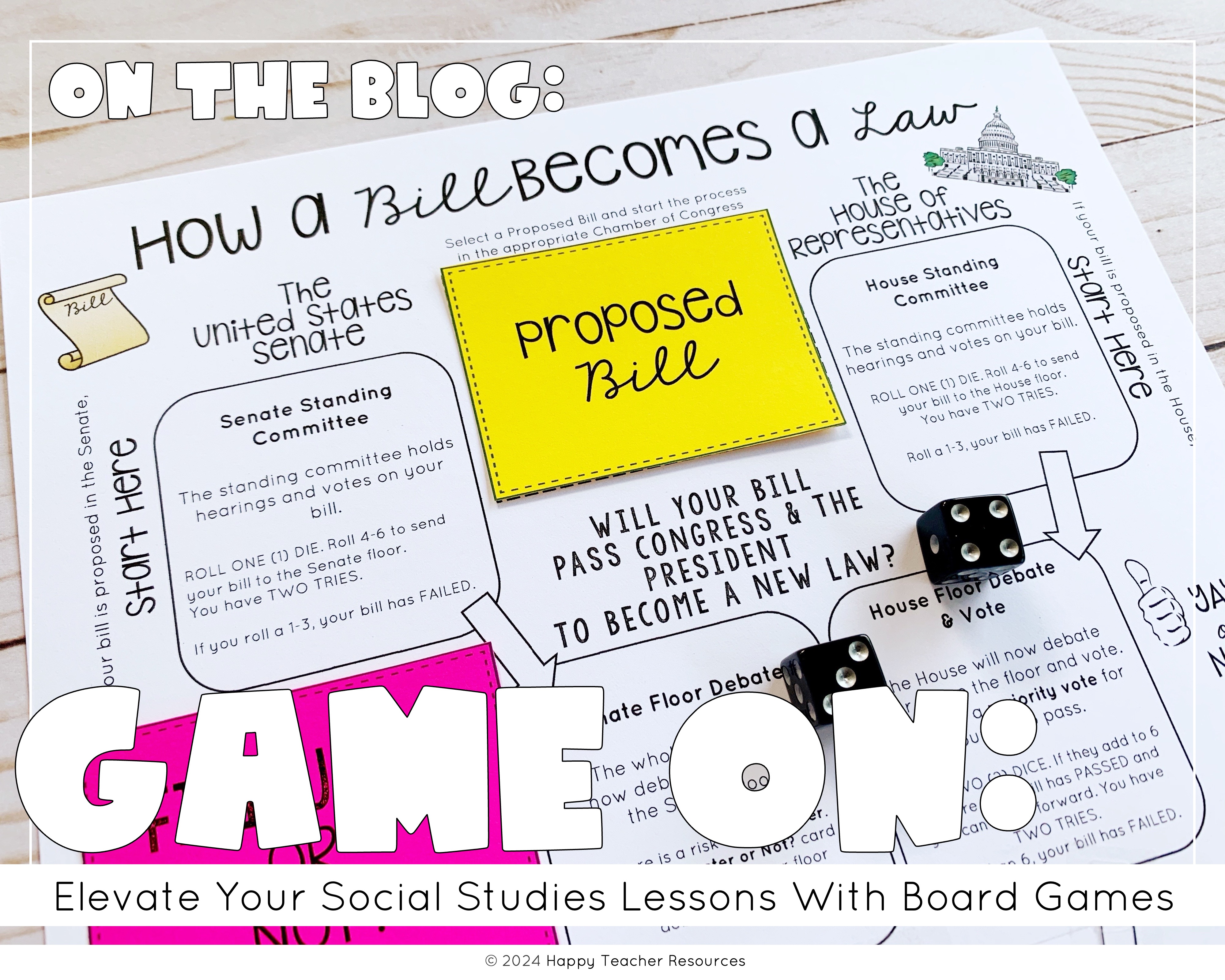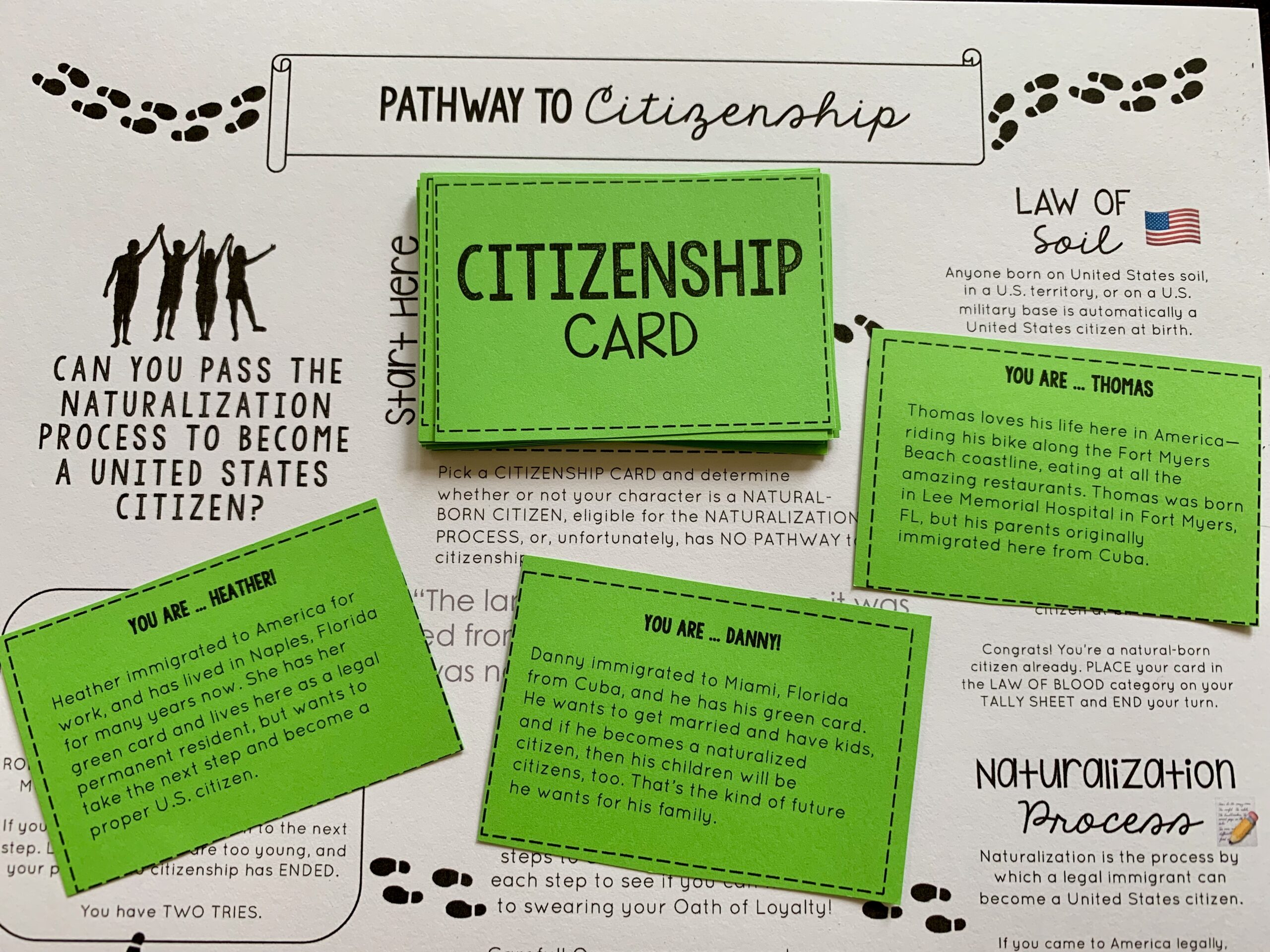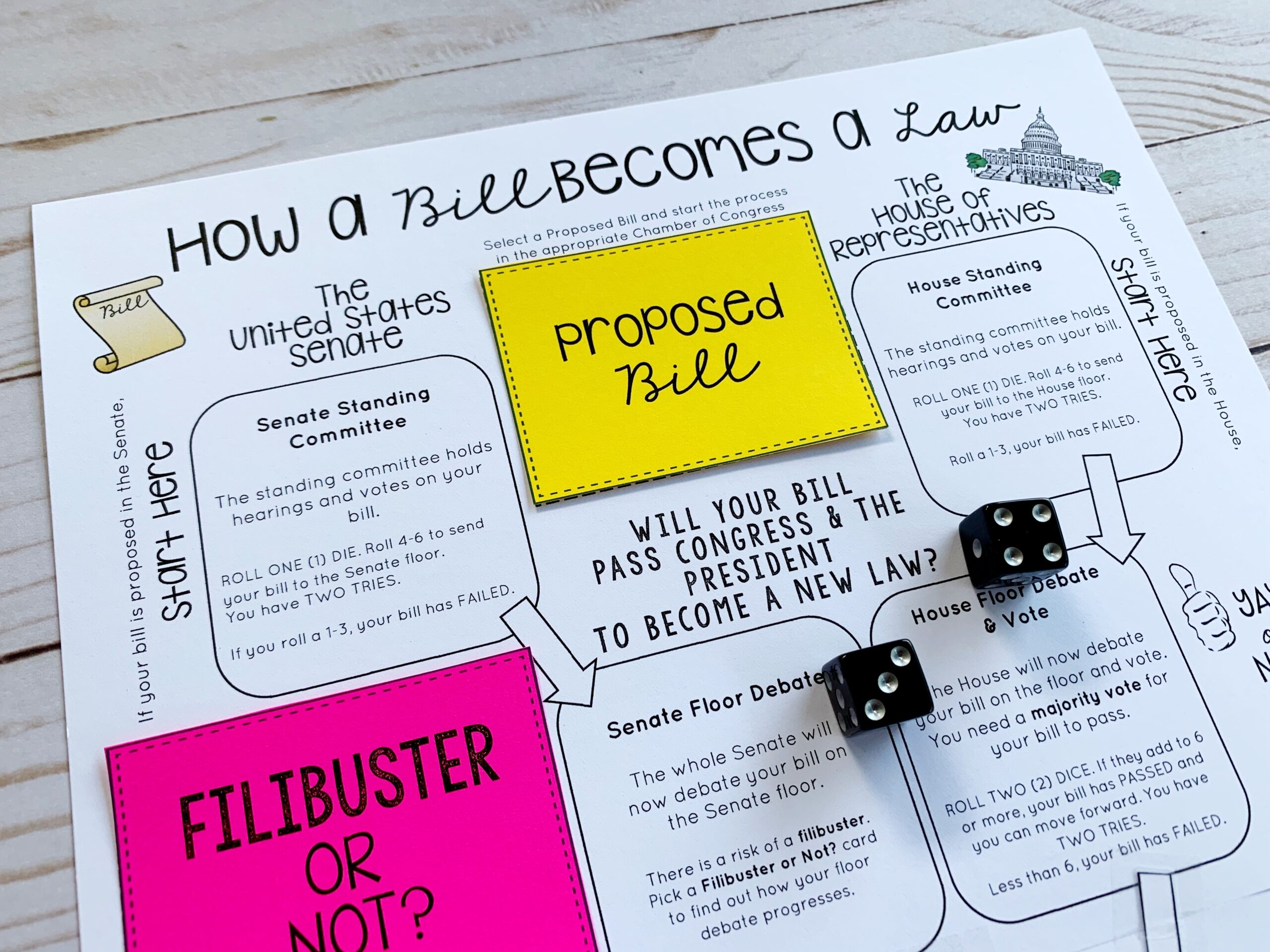
“History is boring.”
“This class is so dull.”
“I always hated history in school.”
One of the steepest uphill battles for a social studies teacher is convincing students (and sometimes even their parents) that learning history—be it American History, World History, Civics, or American Government—can actually be fun. Not every day can be a field trip to a historical landmark or Congressional office, but there are plenty of other, simpler ways to create engaging content that might just spark your students’ attention.
Gallery walks can get kids out of their seats and roaming the room like a scavenger hunt; escape rooms or mystery investigations can bring out their inner, problem-solving detectives, and teaching social studies with board games can be a hands-on way to pull students into your curriculum and, just maybe, teach them a thing or two while they’re having fun.
What Are the Benefits for Students?
First of all, kids love any excuse to close their textbook, put down their pencils, and actually do something fun. But games can offer even more for your students than that. These types of lessons can:
✩ Help students develop critical thinking and problem solving skills
✩ Encourage a positive classroom community as students work together on the game
✩ Help students memorize vocabulary, key concepts, and step-by-step processes as they play through the game board!
How Can I Incorporate Board Games into my Social Studies Curriculum?
There are several ways to teach Social Studies topics with board games, some more involved than others. Here are some simple ideas with existing board games that can be adapted for your purposes, and then I’ll get into the really fun, more customizable options.
Using Existing Games for Curriculum Review
✩ Use a Trivial Pursuit board with review questions! This is great for year-end review, when you have a lot of topics you want your students to cover. You can source old Trivial Pursuit boards from eBay, thrift stores, or Facebook Marketplace. Create six unique color-coded categories and write 20-30 questions for each category. Students play the game as normal, collecting pie pieces as they correctly answer review questions!
✩ Jenga Blocks can make for a nerve-wracking review game! You can place color-dot stickers on Jenga blocks and coordinate them to different review categories, with questions written on matching cards. If the student answers the question correctly, they’re safe, and don’t have to pull another block. If they answer incorrectly, though, they have to keep going—and risk toppling the whole tower!
✩ A digital Jeopardy template can make a class-wide review super fun! Okay, so this one isn’t really a board game, but you can find digital templates for Jeopardy review games on TeachersPayTeachers and fill out the categories to match your review subjects. Have students compete for points, and watch how the competition heats up!
Those are all fun options for creating review games, but what if you want to use board games to actually teach content in your classroom? This is where you can really have some fun!
Teaching Social Studies Lessons with Board Games
I’ve found that the social studies topics that translate best into board games are ones with step-by-step processes. This way, the board game can be modeled after the process, and students can play through each step. A few play-throughs, and students have memorized the process almost without realizing!
I’ve made two Civics board games here on Happy Teacher Resources that follow this basic idea, where students learn a step-by-step process as they play:
✩ Pathway to Citizenship: In this board game, students follow the steps to becoming a United States Citizen. They pick a character card and decide whether their character is already a citizen through Law of Blood or Law of Soil, if they have no pathway to citizenship, or if they’re eligible for the Naturalization Process—in which case, they play on through the game board.
The game board moves them through each step of the naturalization process, from deciding their age, how long they’ve been residing in the country, whether they’re of good moral character, to if they can pass their citizenship test! Students compete with each other to see how many characters they can successfully get through the citizenship process. After a few rounds of the game, students know the requirements for United States citizenship like the back of their hand!

✩ How a Bill Becomes a Law: This is another great topic that easily translates to a board game, and it’s one of Happy Teacher Resources’ best-selling products. This game takes students through the process of passing a law in the United States Congress. Students select a bill, determine whether it starts in the House or the Senate, and then go through the entire legislative process, from passing Congressional committees, to floor votes, to breaking filibusters and overturning a Presidential veto. At any time, the bill can fail, and students are sent right back to the starting line.

Using board games to teach a step-by-step process like this can really hammer home how difficult it is to do something like pass a bill into law. Plus, the more determined the student is to win the game (in How A Bill Becomes a Law, a student wins by collecting more laws than their opponents within a given time limit), the more times they play through the process—inadvertently memorizing these key steps without hardly realizing they’re doing it!
What Do Teachers Have to Say About Happy Teacher Resources Board Games?
“I had my high school kids play this game as we were wrapping up our first unit of the semester, and they absolutely loved it! My students were constantly asking if there were going to be more games like this one. My students were engaged across all three classes, and it really helped them understand the naturalization process. We completed the reflection sheet afterwards and it really helped introduce some really great conversations. I put my kids into groups when they were playing this game, and it really helped them become more familiar with other classmates. Thank you so much!” Kaitlynn F., Pathway to Citizenship Review
“This is a great resource! Students were surprised as to how difficult it is to get a law passed. This played right into the lesson and supported their learning.” Janine B., How A Bill Becomes a Law Review.
“This game is very engaging, and I used it to introduce my students to the legislative branch. Afterwards, I gave them additional worksheets including the one in the lesson plan. Normally they would be unmotivated, but practically every student could write a paragraph on the legislation process. I was amazed. This is my first review ever on TPT because this is the best purchase so far in my years on this platform.” Catherine B., How A Bill Becomes A Law Review
As you can see, these games helped students connect with other and the curriculum, and the act of playing through the process over and over really enhanced their comprehension of the material!
What are some other ideas for Social Studies Board Games?
Here are some other concepts I think would make great Civics, American Government, or American History-related board games:
✩ The United States Elections process! You could make a board game following a political candidate through the primaries and general election, as well as the Electoral College fight on Election Night!
✩ The Judicial Court Process. Perhaps you could make a game following a court case through its various steps, including the initial case, appealing to the District Court of Appeals, and even submitting a writ of certiorari to the Supreme Court.
✩ The Steps of United States Foreign Policy. There are seven tools and five goals of United States foreign policy. I could envision a board game where students follow the progression of a conflict through the various stages, trying to come to a diplomatic solution.
✩ You could also use board games to cover timelines like the American Revolution or a specific war. Students could play as characters moving through the timeline of the historical period!
(Hmm, maybe I should turn some of these ideas into future products! 🤔)
I’ve Got an Idea For a Social Studies Board Game — Now How Do I Make It?
I make my Happy Teacher Resources board games on PowerPoint. You simply resize the document to 8.5×11 inches (the size of a sheet of printer paper), and let your imagination go wild! I like to create a three-page game that can be easily laminated, taped together, and folded up for easy storage.
As for the rest of the board game pieces, you can create cards and dice on PowerPoint, though I definitely recommend buying real dice, as foldable paper dice are easily smashed. You can either make pop-up game tokens or buy generic ones online. I would also definitely recommend including the instructions for your game on the board itself, just for ease of use!
Final Tips for Teaching Social Studies with Board Games
✩ Don’t make the game over-complicated: In both of my Happy Teacher Resources board games, the rules are fairly simple—move down the board while following the directions for each step, and try to collect as many citizens or laws as you can before time is up. Too many fiddly rules will intimidate students, and they’ll be more focused on gameplay than actually memorizing the content—and the content is what you want them to remember!
✩ Utilize a Game Reflection as an Exit Ticket: Both of my board games come with a Reflection Worksheet that asks students comprehension questions about key concepts—to make sure they’ve nailed those Objectives—and asks them what they feel about the game they have played. For Pathway to Citizenship, I want students to walk away from the game appreciating how difficult the path can be for a person trying to become a United States Citizenship. In the same way, How A Bill Becomes a Law should leave students appreciating how difficult it truly is to pass a law in Congress! The actual gameplay should be part of the learning experience.
Become a happy teacher — join the email list!
Never miss a new product or a sale by signing up for an email subscription! I send periodic emails recapping new products, updates, and upcoming sales. Plus, you’ll get a free week of Civics Bell Ringers just for signing up!
Enter your email below to get started.
You can also follow Happy Teacher Resources on social media: Instagram | Facebook | Pinterest
